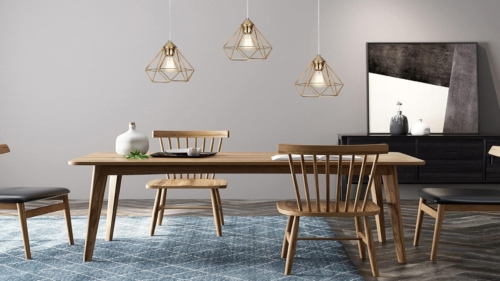In today’s fast-paced world, having a multifunctional dining room can greatly enhance the functionality and efficiency of your living space. Whether you have limited square footage or simply want to make the most of your dining area, incorporating versatility is key. However, there are certain do’s and don’ts to keep in mind when designing and utilizing a multifunctional dining room.
In this article, we will explore some essential tips to help you create a versatile space that seamlessly transitions between dining, working, and more.
The Do’s
- Optimize furniture selection
- Create flexible seating arrangements
- Embrace smart storage solutions
- Utilize lighting strategically
- Incorporate technology
The Don’ts
- Avoid oversized furniture
- Don’t sacrifice comfort for style
- Avoid clutter
- Don’t overlook acoustics
- Avoid neglecting personalization
The Do’s
1. Optimize furniture selection
Choose furniture pieces that serve multiple purposes. So,look for dining tables with extensions or foldable sides, allowing you to adjust the size according to your needs. Additionally, consider chairs that are comfortable for extended sitting periods yet lightweight and stackable for easy storage.
2. Create flexible seating arrangements
Arrange your seating in a way that can accommodate different activities. For example, if you’re using the dining room as a workspace, consider incorporating a comfortable chair and a small desk. Also, incorporate modular furniture or movable seating options like benches or ottomans that can be easily rearranged to accommodate various functions.
3. Embrace smart storage solutions
Efficient storage is crucial in a multifunctional dining room. In connection, utilize built-in cabinets, shelves, or sideboards to store dining essentials, work supplies, or other items. Further, incorporate storage options that blend seamlessly with the overall design, keeping clutter at bay and allowing for a clean and organized space.
4. Utilize lighting strategically
Lighting plays a vital role in creating the desired ambiance and functionality. Then, install a dimmer switch or use adjustable lighting fixtures to control the brightness level according to different activities. Task lighting, such as desk lamps or pendant lights, can provide focused illumination for work or reading purposes.
5. Incorporate technology
If you plan to use your dining room as a home office or entertainment center, consider integrating technology. So, install power outlets and charging stations near work areas to keep devices readily accessible. Also, include a Wi-Fi network extender for seamless internet connectivity throughout the room.
The Don’ts
1. Avoid oversized furniture
In a multifunctional dining room, bulky furniture can restrict movement and make the space feel cramped. Opt for appropriately sized furniture that complements the room’s dimensions and leaves enough room for easy maneuverability.
2. Don’t sacrifice comfort for style
While aesthetics are important, prioritize comfort when selecting chairs or seating options. Since you’ll be spending extended periods in the dining room for various activities, ensure that the seating provides adequate support and cushioning.
3. Avoid clutter
A cluttered dining room can hinder functionality and create a chaotic atmosphere. Besides, resist the temptation to overcrowd the space with unnecessary items. Instead, adopt a minimalist approach, keeping only essential items within reach and utilizing storage solutions to maintain a clean and organized environment.
4. Don’t overlook acoustics
In a multifunctional dining room, noise can be a significant concern. To add, consider incorporating sound-absorbing materials such as rugs, curtains, or acoustic panels to minimize echo and create a more pleasant environment. These additions can enhance privacy and reduce distractions when using the space for work or relaxation.
5. Avoid neglecting personalization
Just because the dining room serves multiple functions doesn’t mean it should lack personality. Inject your personal style through artwork, decorative elements, or plants. Besides, personal touches can make the space feel welcoming and reflect your individual taste.
Designing a multifunctional dining room requires careful consideration to ensure a harmonious balance between versatility and functionality. By following the do’s and don’ts outlined in this article, you can create a space that seamlessly transitions between dining, working, and other activities while maintaining an inviting and organized atmosphere in your home. Remember to optimize furniture selection, incorporate flexible seating arrangements, and embrace smart storage solutions. By paying attention to lighting, technology integration, and avoiding common pitfalls, you can create a multifunctional dining room that caters to your specific needs and enhances your overall living experience.
Explore Top 5 Paint Colors for a Multifunctional Dining Room for more creative inspiration.
About Us:
Founded in 2017, Satin and Slate is one of the elite interior design studios in Southern California. Located in Long Beach, this dedicated team of designers oversees from kitchen and bathroom renovations to commercial projects. Equipped with their own showroom/studio they can satisfy the needs of any client. Featuring clean lines, bright colors and fresh ideas Satin and Slate’s mission is to bring your vision to life and help transform your space into something extraordinary.















